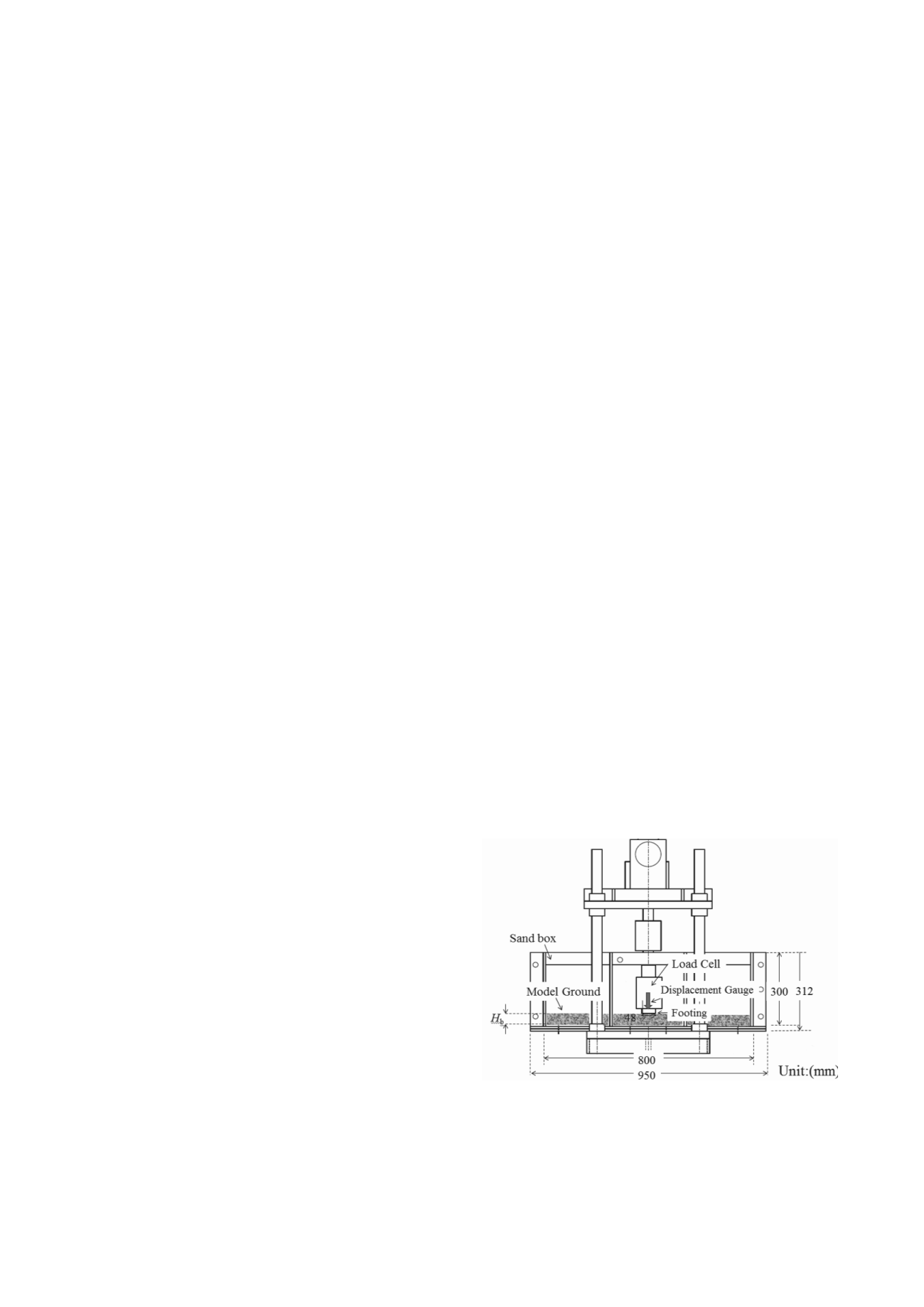
1275
Effects of ballast thickness and tie-tamper repair on settlement characteristics of
railway ballasted tracks
Les effets de l'épaisseur de ballast et de la réparation de lien-bourreur sur le tassement des voies
chemin de fer
Hayano K., Ishii K.
Yokohama National University
Muramoto K.
Railway Technical Research Institute
ABSTRACT: The effects of ballast thickness and tie-tamper repair on the settlement characteristics of ballasted tracks are
investigated by conducting a series of cyclic loading tests on model grounds. A model sleeper at a one-fifth scale was used, and tie-
tamper implementation was physically simulated in the model tests in which relationships between the number of loading cycles and
sleeper settlement were obtained. In addition, maximum shear strain distributions generated in the model grounds were analyzed with
particle image velocimetry. Results suggest that the 250 mm ballast thickness currently adopted as the standard design is ineffective
for minimizing settlement that occurs when the nonlinearity of roadbed compressibility is relatively moderate. Moreover,
characteristics of the initial settlement process are altered significantly after tie-tamper implementation, although the degree of gradual
subsidence undergoes minimal change regardless of ballast thickness and roadbed type.
RÉSUMÉ : Les effets de l'épaisseur de ballast et de la réparation de lien-bourreur sur les caractéristiques de nivellement des voies
lestées sont étudiés. Une série d'essais cycliques de chargement sur un modèle à une échelle d'un cinquième a été effectuée.
L’exécution de lien-bourreur a été physiquement simulée dans les essais sur maquette. Les relations entre le nombre de cycles de
chargement et le déplacement sont respectées. De plus, les distributions des contraintes de cisaillement maximales du modèle sont
analysées par analyse d’image. Les résultats montrent que l’épaisseur de ballast de 250 mm adoptée actuellement comme standard est
inefficace pour minimiser le tassement qui se produit pour une compressibilité de terre-plein non linéaire relativement modérée. De
plus, le processus de tassement initial change considérablement après mise en oeuvre du lien-bourreur, malgré les effets minimes
durant l’implantation.
KEYWORDS: Railway ballasted track, Maintenance, Residual settlement, Model test
1 INTRODUCTION
Railway ballasted tracks, which are composed of crushed
stones, rails, and sleepers, usually undergo residual settlement
due to railway traffic. In order to perform appropriate
maintenance on these tracks, it is important to clarify such
settlement characteristics. However, optimum relationships
between ballast thickness and roadbed rigidity have not been
well understood
1)
, particularly with the 250 mm thick ballast
currently used as the standard design. Ballasted tracks that show
a substantial amount of settlement is often restored to the
original positions by tie-tamper implementation. However, the
manner in which this type of implementation alters the
settlement characteristics of the ballasted tracks is poorly
understood.
In this study, therefore, the effects of ballast thickness and
tie-tamper repair on the settlement characteristics of ballasted
tracks are investigated. A series of cyclic loading tests are
conducted on a model sleeper at a one-fifth scale, as shown in
Fig. 1. In the loading tests, tie-tamper repair was physically
simulated by inserting a small tool into the ballasts. In addition,
particle image velocimetry (PIV) analysis was performed to
interpret deformation of the ballasts and roadbeds.
2 MODEL GROUNDS AND CYCLIC LOADING
Figure 1 shows the model test apparatus used in this research.
Model grounds at a scale of one-fifth were constructed in a sand
box with interior dimensions of 800 mm wide, 304 mm deep,
and 300 mm high. A duralumin footing with a width of 48 mm
was used to model the sleeper. Crushed stones approximately
one-fifth the size of actual ballasts were selected to model the
ballasts. The maximum particle diameter
D
max
was 19 mm, and
the mean diameter
D
50
was 8.0 mm.
Cyclic loading tests were conducted on 12 model grounds
under various conditions. Crushed stones with 20, 50, and 80
mm thicknesses were constructed on four types of roadbeds
(Table 1). Crushed stones were compacted to achieve a dry
density of 1.60 g/cm
3
in each test.
Figure 1. Model test apparatus for cyclic loading test in the case of a
steel roadbed
As shown in Table 1, the roadbed in Case 1 was represented
by the bottom steel plate of the sand box. The roadbed in Case 2
was constructed with Toyoura sand (
D
r
= 90%) with a thickness


